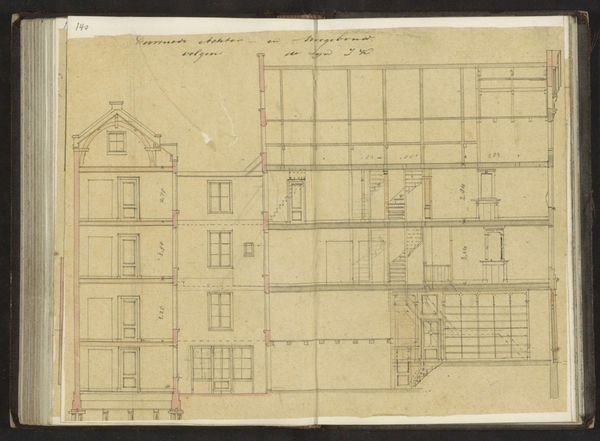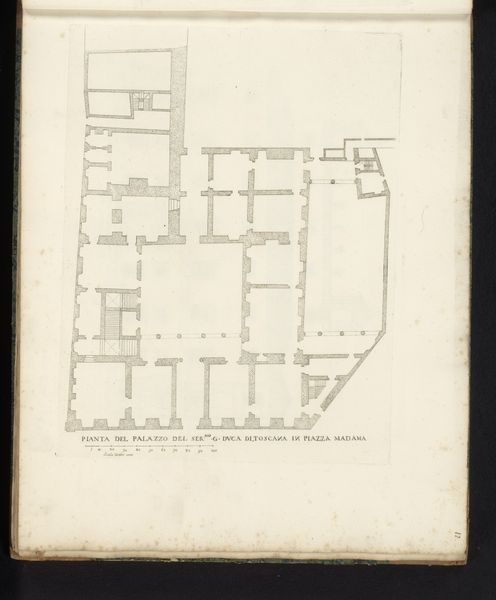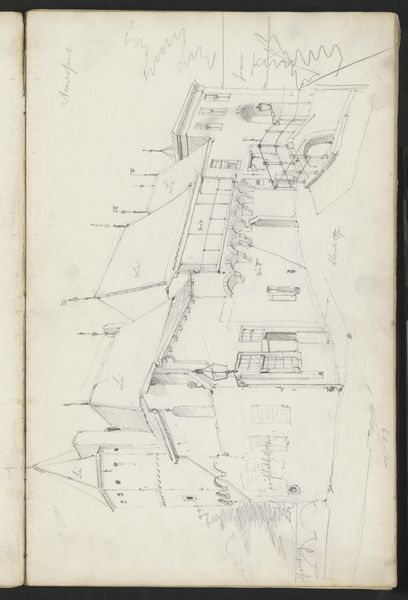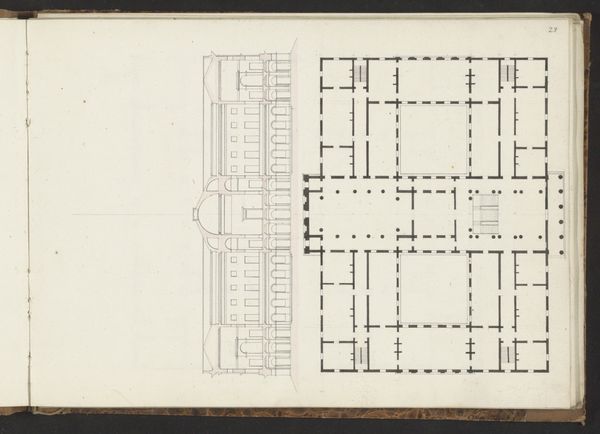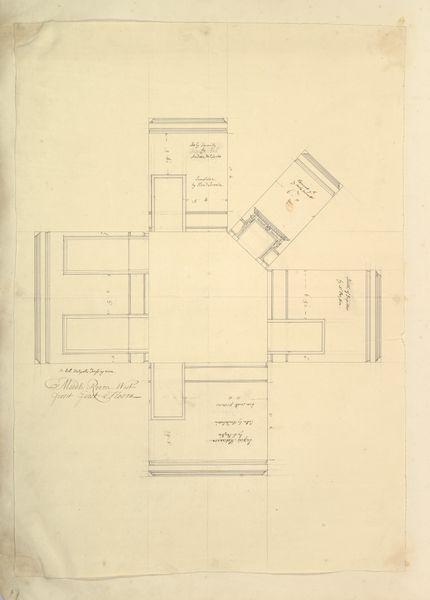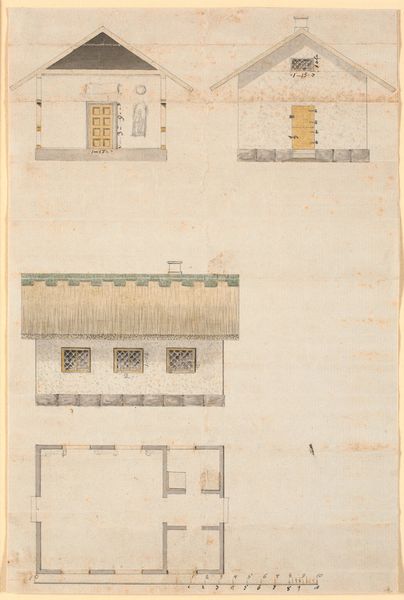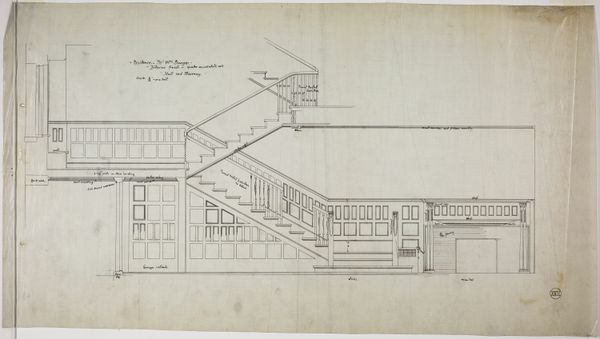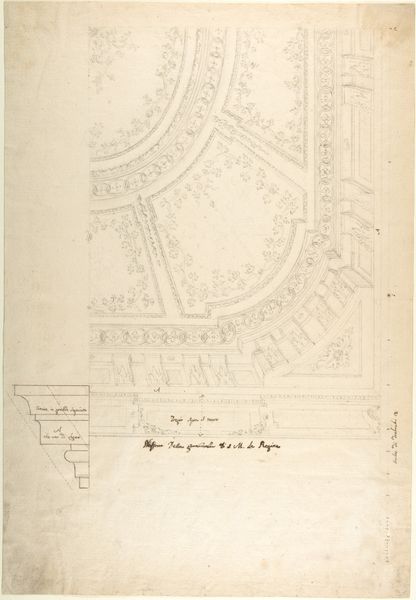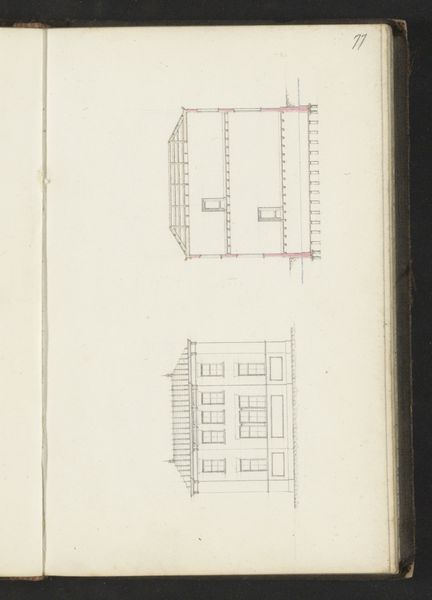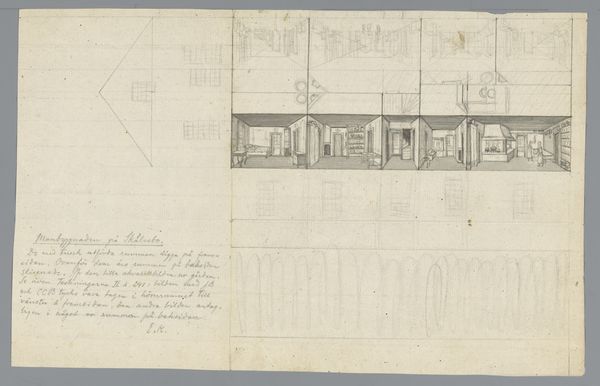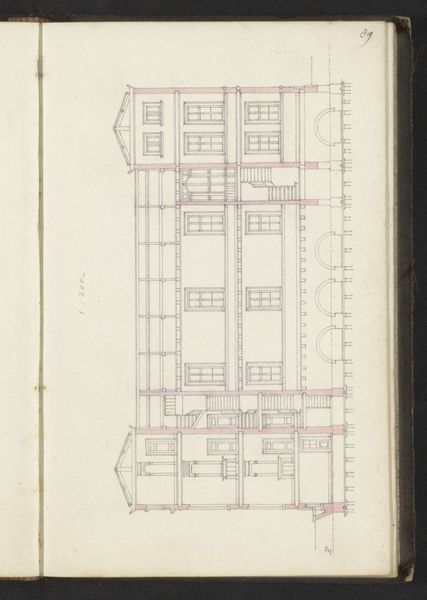
Design for a Smithy and Two Cottages 1880 - 1915
0:00
0:00
drawing, mixed-media, watercolor, ink, pencil, architecture
#
architectural sketch
#
drawing
#
mixed-media
#
watercolor
#
ink
#
pencil
#
architectural section drawing
#
architectural drawing
#
architecture drawing
#
architecture
Dimensions: sheet: 18 1/4 x 11 1/2 in. (46.4 x 29.2 cm)
Copyright: Public Domain
Curator: Here we have Charles Edward Mallows’ "Design for a Smithy and Two Cottages," dating roughly from 1880 to 1915, rendered in ink, pencil, and watercolor. What are your initial thoughts? Editor: Immediately, I’m struck by the interplay of precision and fluidity. The geometric shapes of the buildings contrast beautifully with the soft washes of color indicating the landscape, evoking a kind of nostalgic yearning for rural simplicity. Curator: Yes, the composition employs a skillful balance between architectural rigidity and picturesque informality. Mallows masterfully employs varied line weights to articulate the different planes and materials of the proposed structures, adding depth. Editor: Precisely. And the choice of media, the watercolor in particular, is quite telling. It softens the rigid lines, making the whole design appear more inviting. I can't help but wonder, who was this design for? Did it represent a movement towards providing aesthetically pleasing but practical spaces for tradesmen, a dignified setting perhaps to offset industrialization? Curator: Good questions! Placing this within the context of the Arts and Crafts movement, we can certainly argue for an ethical dimension at play, beyond mere design. Notice how the drawing invites the viewer to contemplate the social implications of integrating work and domestic space, providing laborers an improved quality of life via well-planned architecture. Editor: It feels inherently humanist. The integration of the cottages into the overall design signifies a holistic approach to community planning, and, in its time, challenged the traditionally marginalized existence of manual laborers. You see, design in architecture represents how society fundamentally respects certain elements of life. Curator: And further, consider the formal elements—the harmonious repetition of gabled roofs, the rhythm of windows. Mallows uses the aesthetics to propose a unified vision of labor and life, connecting workers to nature through design. Editor: Looking at this, I realize how architecture really does more than provide shelter. I hadn’t considered its socio-political capabilities so distinctly. Curator: Indeed. This design presents a utopian vision, elegantly visualized through the thoughtful use of form, line, and color. Editor: An early type of "starchitecture" I imagine, only purposed to improve working class life, rather than simply elevating capital. What a concept.
Comments
No comments
Be the first to comment and join the conversation on the ultimate creative platform.
